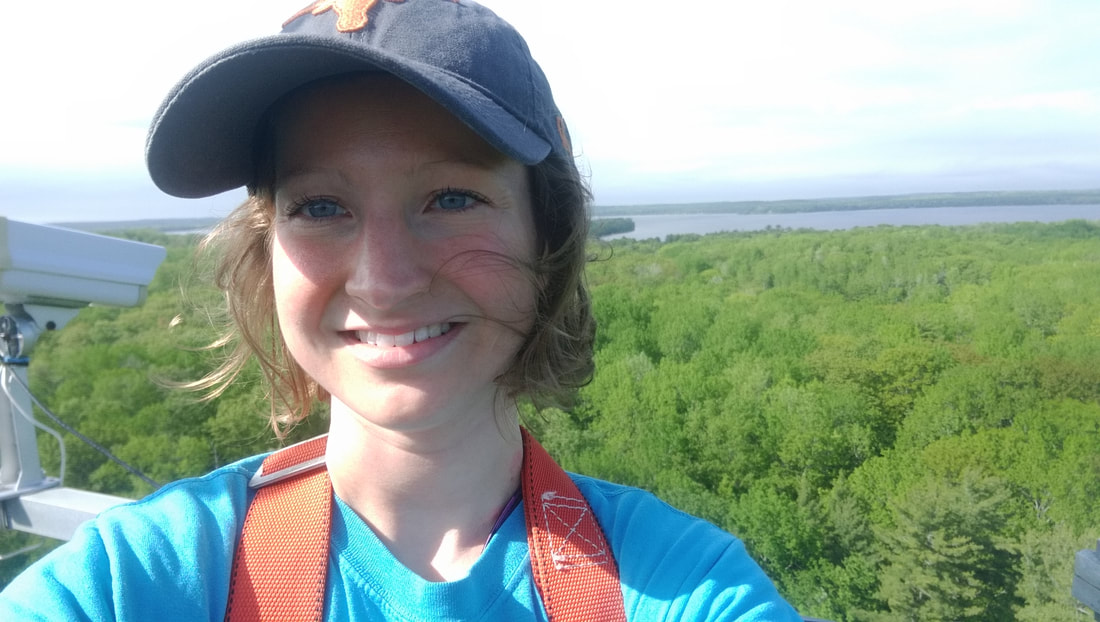For me, ecohydrology is the study of how hydrology is influenced by ecosystems and in turn how ecosystems respond to the hydroclimate.
What are your undergraduate and graduate degrees in?
I have a bachelor of arts in Spanish and a bachelor of science in civil engineering with a focus on structural engineering. My master’s and my doctorate are both in civil engineering with a specialization in hydrologic engineering.
How did you arrive at working in/thinking about ecohydrology?
In short, through a series of very fortunate events. I stumbled into ecohydrology by chance to the extent that I often joke that I am the “accidental academic.” After graduating with my degree in structural engineering, I worked for the US Army Corps of Engineers (USACE) in Huntington, WV, where I was part of several projects involving levees, floodwalls, and locks and dams. But, I was also able to be part of numerous smaller projects focused on riverbank, wetland, and riparian forest restoration. Through my work with the USACE, I developed a love of hydrology and field work and decided to apply to get a master’s degree in hydrologic engineering. At that time, I didn’t realize that incoming graduate students generally contacted potential advisors to request to join a lab before applying. Luckily for me, I won a fellowship and was contacted by my eventual advisor, Gil Bohrer, who had a project he was looking for someone to tackle. I wasn’t sold on constructing sap flow sensors and studying forest responses to disturbance at first, but I figured it was only two years and it would be nice to try something new. At the end of the first year of my master’s, I had the opportunity to travel to Panama to collect ground-based LiDAR measurements of the rainforest canopy. It was such an exciting experience to conduct research with the Smithsonian on a tropical island that I didn’t think twice when Gil asked me to continue as a PhD student upon my return. There was a turning point for me in the course of graduate school where I realized, particularly when I was in the field, that work didn’t feel like work. This was the moment when I decided that I wanted research to be my career, rather than going back to the USACE or working as a consultant. I had aspirations of building a career as a research scientist in a national lab. However, shortly after I started my post-doc appointment, there was a political shift and a federal hiring freeze. At that point, Gil and I decided that I should start applying to a few faculty positions to see where I needed to devote time during my post-doc in order to be competitive in the job market. Fortunately, the Jackson School of Geological Sciences at the University of Texas at Austin made me an offer I couldn’t refuse, and I took the leap onto the tenure-track and started my own ecohydrology lab. Although it’s a long way removed from structural engineering, I’m happy to say that I have an amazing job and that I am motivated daily to continue exploring new and exciting avenues of ecohydrologic research.
What do you see as an important emerging area of ecohydrology?
To me, the most interesting aspect of ecohydrology is the dynamic regulation of transpiration by plants and the way ecosystem processes couple subsurface and atmospheric processes and feedback into weather and climate. As human populations expand and continue to change land use and land cover types, it will be fascinating to watch how this interacts with global climate change.
Do you have a favorite ecohydrology paper? Describe/explain.
My favorite ecohydrology paper is Brooks, R.J., Barnard, H.R., Coulombe, R. and McDonnell, J.J., 2010. Ecohydrologic separation of water between trees and streams in a Mediterranean climate. Nat. Geosci., 3(2): 100-104. The authors used stable isotopes to analyze water being used by different species of tree during the dry season to identify the water source each was using to survive drought conditions. This work inspired me to think more broadly about the range of possible drought adaptations and hydraulic strategies employed by species that regularly co-exist in the same ecosystem but function radically differently.
What do you do for fun (apart from ecohydrology)?
Outside of my field research, I like to be active, and I love to travel. I’m a bit of an adrenaline junky and enjoy wakeboarding, waterskiing, snow skiing, rock climbing, and dancing. In my free time I also enjoy painting and sewing.

 RSS Feed
RSS Feed